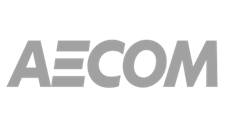The PCAOB recently released inspection findings for 2022 which reflected a dramatic increase in audit deficiencies. The PCAOB has called the findings as “unacceptable” and indicated that firms have to make changes to improve audit quality.
The report, Staff Update and Preview of 2022 Inspection Observations, provides detailed information on common deficiencies, observations related to quality control systems, trends in areas with recurring deficiencies, and good practices.
Separately, the PCAOB issued Annual Report on the Interim Inspection Program Related to Audits of Brokers and Dealers which provides information and inspection observations on 2022 inspections of audits of brokers and dealers.
While these findings relate to auditors of public companies and broker-dealers, auditors of nonpublic companies ought to consider the observations and how they could impact their firm’s audit quality.
| Practical Consideration: Both reports can be found on the PCAOB website at www.pcaobus.org. |
For 2022, the PCAOB noted that audit deficiencies rose for most categories of audit firms in 2022 from 2021. The PCAOB expects that approximately 40% of reviewed audits will have at least one deficiency that will be included in Part I.A of the audit firm’s inspection report. This is up from 34% in 2021 and 29% in 2020. Interestingly, the biggest increase was found in the category of Global Network Firms. Part I.A of inspection reports discuss deficiencies that were of such significance that the PCAOB believes the firm hadn’t obtained sufficient audit evidence to support the audit report opinion.
In addition, the PCAOB expects that 46% of reviewed audits will have one or more deficiencies reported in Part 1.B of inspection reports, up from 40% in 2021 and 26% in 2020. Part 1.B of inspection reports reflect occurrences of noncompliance with PCAOB standards or rules that don’t directly relate to the sufficiency or appropriateness of evidence obtained to support the auditor’s opinion. For example, these items might relate to critical audit matters and certain independence deficiencies.
The PCAOB report lists the following common deficiency areas found in 2022 inspections:
- Auditing Internal Control Over Financial Reporting. Testing controls continues to be a common deficiency area for auditors of public companies. As an example, auditors didn’t appropriately evaluate controls with a review aspect as to whether they operated with sufficient precision.
- Revenue-Related Accounts. Deficiencies are commonly found in responses to fraud risk, the use of sampling, confirmation procedures, testing presentation and disclosure, and testing of data produced by the company used as audit evidence, among other items.
- Accounting Estimates. Deficiency examples included (1) the lack of risk assessment procedures for estimates with a significant assumption and (2) the absence of substantive procedures beyond inquiry.
- Business Combinations. One of deficiency examples cited was inappropriate, insufficient or no risk assessment procedures pertaining to an acquisition.
- Inventory. Among other things, insufficient procedures to test inventory existence, including overreliance on the effectiveness of controls such as cycle counts.
- Long-lived Assets. As noted in other common deficiency areas, inspectors found instances of insufficient or no risk assessment procedures. Another deficiency example included insufficient procedures regarding the use of a company’s specialist.
The PCAOB report also highlighted deficiencies found relating to crypto currency transactions.
| Practical Consideration: The PCAOB report provides additional details on the deficiencies related to other PCAOB standards and rules and observations on quality control systems. |
The separate PCAOB annual report on the interim inspection program related to brokers and dealers, noted earlier, provides further information and details on:
- The 2022 inspections approach.
- Summary of inspection observations.
- Good practices.
- Recommended actions for firms.
Document Title:PCAOB Notes Rising Deficiency Rates in Audits, Including Broker-Dealers
Checkpoint Source:Accounting and Auditing Update (PPC)
© 2023 Thomson Reuters/Tax & Accounting. All Rights Reserved.




















